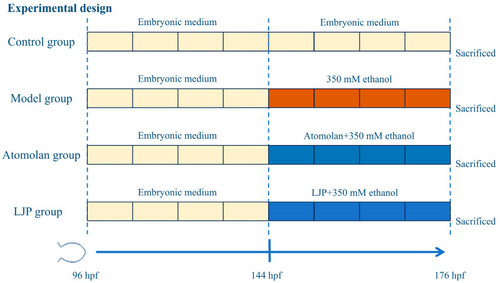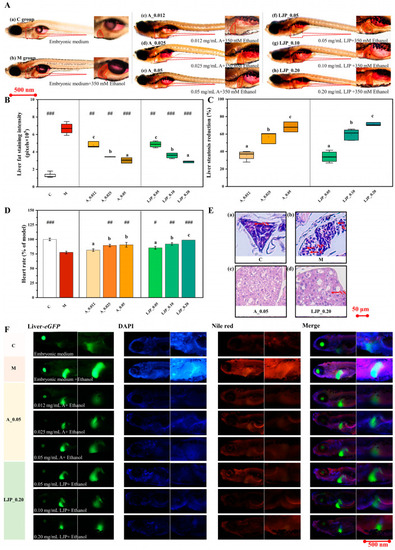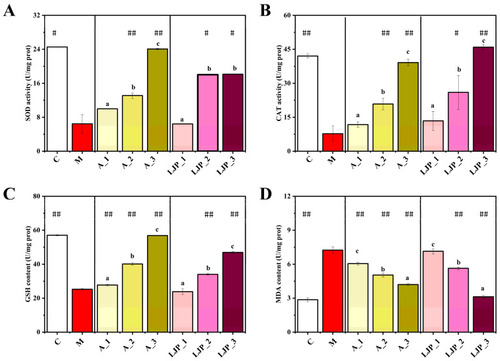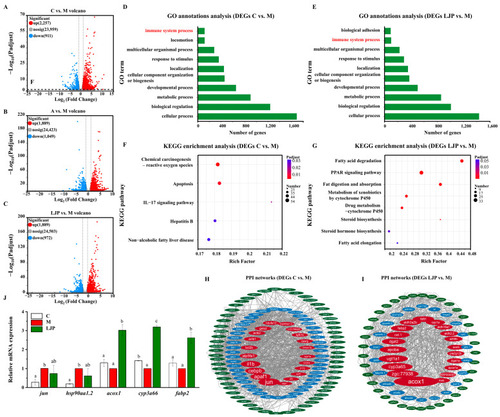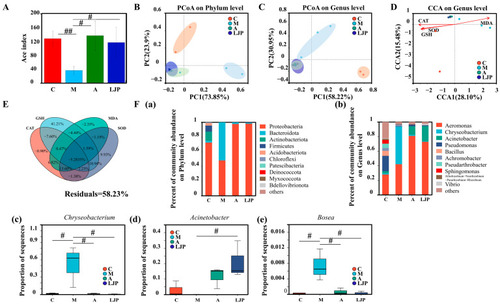- Title
-
Inhibitory Effects of Jiuzao Polysaccharides on Alcoholic Fatty Liver Formation in Zebrafish Larvae and Their Regulatory Impact on Intestinal Microbiota
- Authors
- Li, Q., Wu, L., Wang, G., Zheng, F., Sun, J., Zhang, Y., Li, Z., Li, L., Sun, B.
- Source
- Full text @ Foods
|
Experimental timeline for LJP feeding regime. |
|
The liver visual phenotype of zebrafish larvae at 176 h post-fertilization. ( |
|
Effect of |
|
Identification of DEGs and construction of PPI network. ( |
|
|

